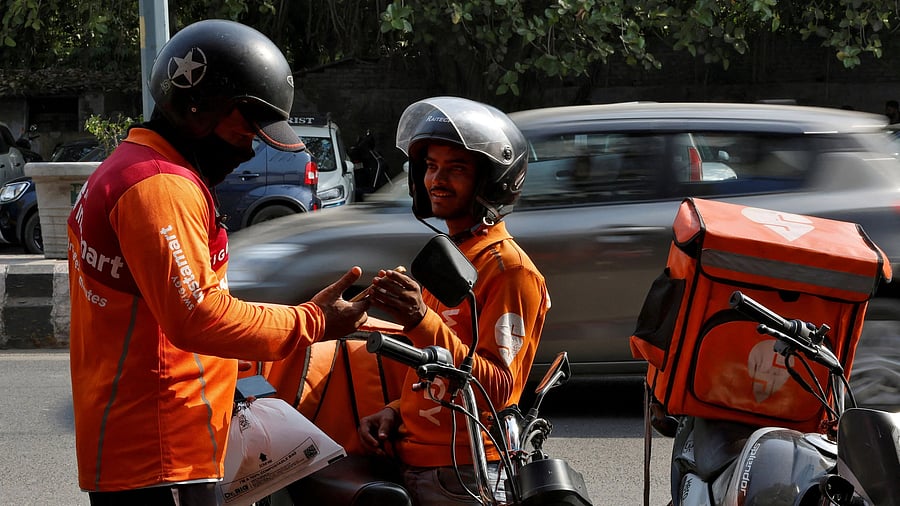
Gig workers prepare to deliver orders outside Swiggy's grocery warehouse at a market area in New Delhi, India.
Credit: Reuters Photo
Bengaluru: Over 2 lakh jobs are expected to be generated this festive season, across various sectors including retail, e-commerce, logistics, and consumer services.
Every year, during the festive season, which begins in the second week of August, companies hire more people to cater to the increased demand.
Hiring for this year’s festive period is up by about 20–25% compared to last year. Sectors such as quick commerce and third-party logistics are driving the uptick, supported by significant investments in supply chain and last-mile delivery infrastructure. Of the projected new jobs, 70% are expected to be gig roles, while 30% are permanent, suggesting that companies are adopting a blended workforce model to balance flexibility and scale, said NLB Services.
Many large q-commerce and ecommerce players are projected to retain 26% of this expanded workforce beyond the festive window, pointing to a structural shift rather than a seasonal spike.
Like last year, this year is also expected to witness a significant surge in hiring across Tier-2 and Tier-3 cities, which are projected to strengthen their role as active growth centres. Locations such as Bhubaneswar, Kochi, Indore, Surat, and Nagpur are anticipated to see a 30–40% increase in gig hiring compared to the same period last year. With these cities emerging as micro-fulfilment hubs for retail and e-commerce companies, Tier 2 cities accounted for 47% (YoY) of total gig hiring during the last festive season, which is expected to rise to 50% in FY26.
Also, in the gig economy—particularly in sectors like customer experience, delivery, grooming, and food services—is expected to see a notable rise in female workforce involvement. Compared to FY25, this season is projected to witness a 30-35% increase in women taking up short-term or gig-based roles.
Sachin Alug, CEO, NLB Services, said, “Over 35% of businesses are now rethinking festive hiring as a component of their long-term talent strategy. We’re seeing companies invest in pre-festive skilling initiatives, revisit their workforce diversity goals, and increasingly view seasonal demand as a testing ground for agile workforce models. While metros like Bengaluru, Mumbai, and Delhi continue to lead in demand by volume, the real growth momentum is shifting to Tier 2 and Tier 3 cities—where talent supply is strong, operational costs are lower, and attrition rates remain minimal.”
Ahead of the festive season, Myntra on Monday said that it observed significant growth in D2C beauty adoption from Tier 2 and Tier 3 cities, particularly in the Northeast and East regions, which have shown a growth upwards of 150%